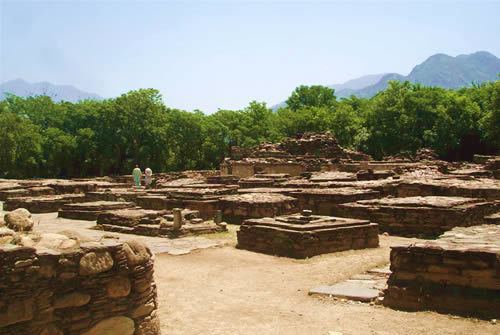Butkara Buddhist Stupa- Pakistan

Address
Butkara Buddhist Stupa- Gul Kada, Gulkada Mingora, Swat, Khyber Pakhtunkhwa, Pakistan
Diety
Buddha
Introduction
The Butkara Stupa is an important Buddhist stupa near Mingora, in the area of Swat, Pakistan. It may have been built by the Mauryan emperor Ashoka, but it is generally dated slightly later to the 2nd century BCE. The stupa was enlarged on five occasions during the following centuries, every time by building over, and encapsulating, the previous structure.
Puranic Significance
The stupa was excavated by an Italian mission (IsIOAO: Istuto Italiano per l’Africa e l’Oriente), led by archaeologist in 1956. During the 2nd century BCE, suggesting a direct involvement of the Indo-Greeks, rulers of northwestern India during that period, in the development of Greco-Buddhist architecture. An Indo-Corinthian capital representing a Buddhist devotee within foliage has been found which had a reliquary and a coins of Azes II buried at its base, securely dating the sculpture to earlier than 20 BCE. The in-situ seated Buddha (or Bodhisattva) statue at Butkara is considered one of the earliest, if not the earliest, known iconographical statues of the Buddha in northwestern India. the statue dates to the late 1st century BCE to the early 1st century, as it was discovered in the GSt 3 stratum that contained a coins of Azes II. More conservative estimates date it to the 1st-2nd century CE, roughly at the same time the first known statues of the Buddha were made in the art of Mathura. Probably the earliest known statue of the Buddha in the art of Mathura is the “Isapur Buddha”, dated to circa 15 CE. This would make the creation of the Buddha image an approximately simultaneous phenomenon between the two geographical areas.
Century/Period/Age
2nd century BCE.
Managed By
UNESCO world heritage site
Nearest Bus Station
Swat
Nearest Railway Station
Haripur station
Nearest Airport
Saidu Sharif.




